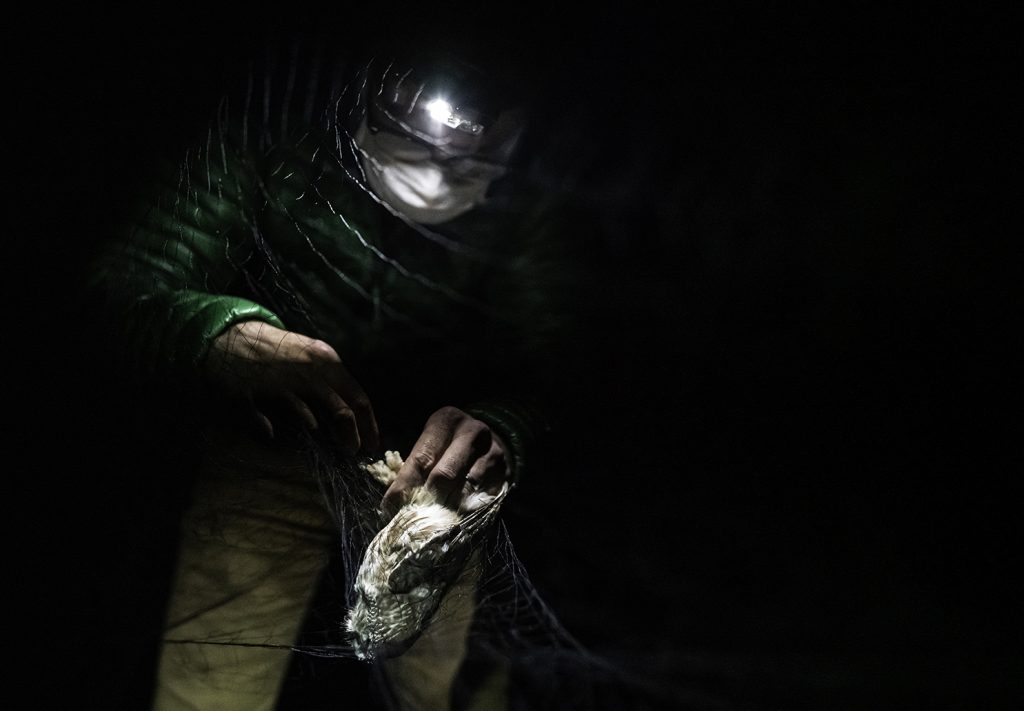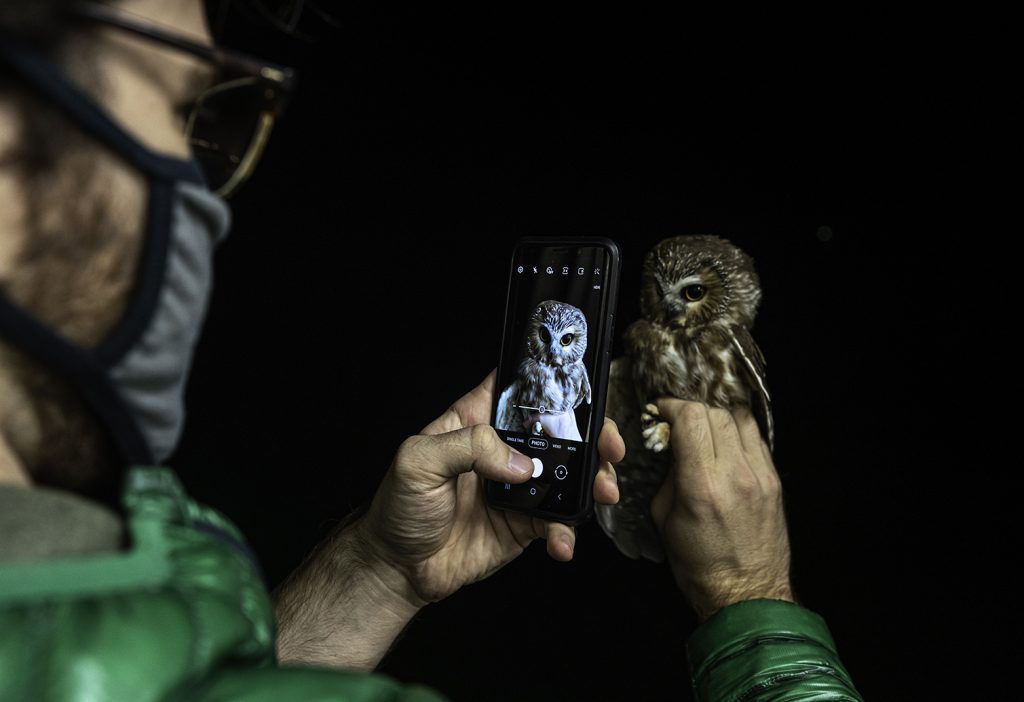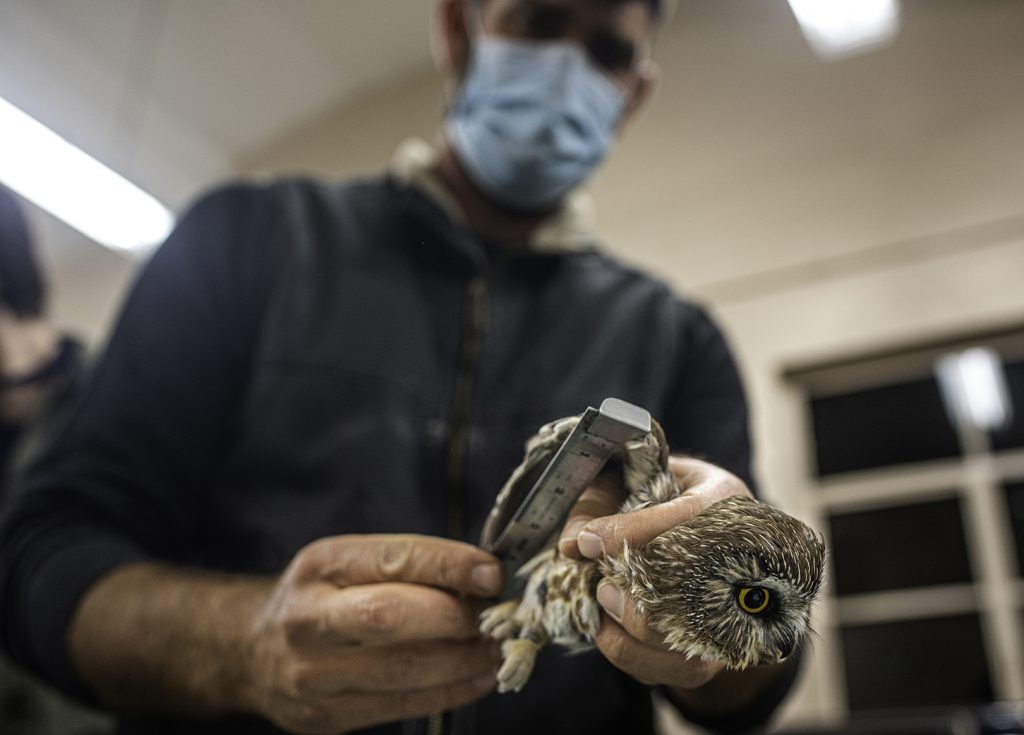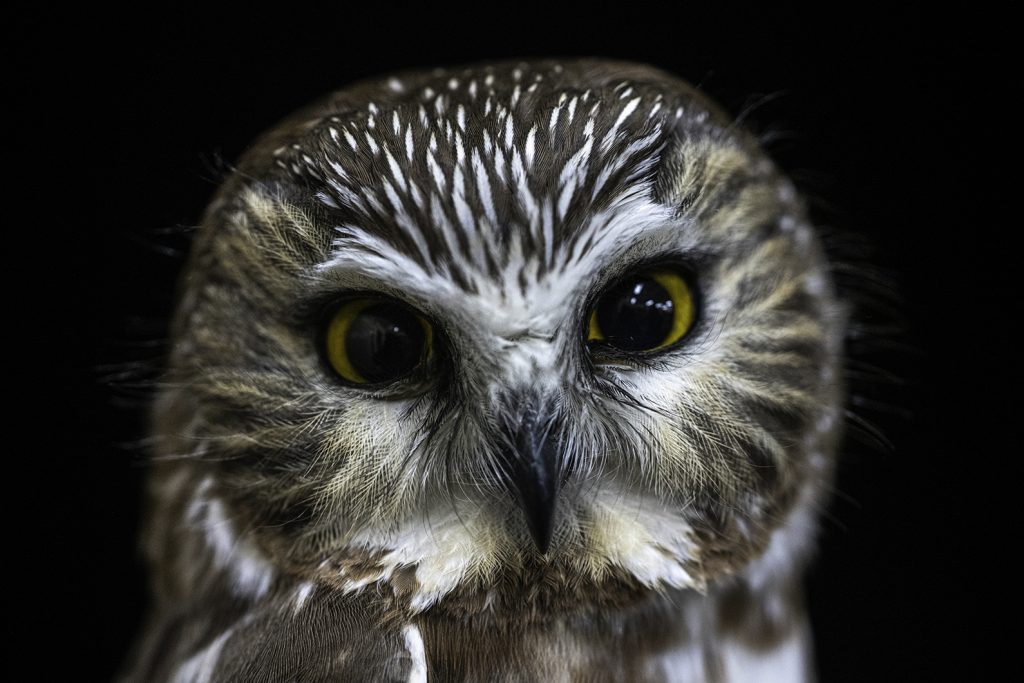Environmental science major Isaac Alderfer photographed his peers and professors as they studied tiny owls at Highland Retreat in nearby Bergton, Va., last fall. He shares about the experience below.
Bird banding is a commonly used practice to collect data on birds, and works by attaching a small plastic or metal band to the leg of a bird so it can be uniquely identified at a future date and location.
Clair Mellinger, professor emeritus of biology and ornithology, started a banding station to catch and learn about Northern Saw-Whet Owls at Highland Retreat 20 years ago and it has continued operating every fall since that November in 2001. These owls used to be largely a mystery to science, but as part of a national Saw-Whet banding network called Project Owlnet, this banding station and over 125 others dedicated to learning more about this under-researched species have discovered important information about this elusive bird that will help us more effectively protect them in the future.
I spent about 10 nights this November at the banding station operating out of an old kitchen at Highland Retreat, walking up the mountain to check the nets and occasionally helping with the banding process myself.

Ben Spory ’10 retrieves an owl caught in the researchers’ net.

Spory documents that night’s research subject.

Charles Zigenfus, professor emeritus of mathematics at James Madison University, and Ben Spory discuss the bird’s age.

Matt Gingerich measures an owl’s wing chord – a straight measurement of wing length without flattening the curvature of the feathers.

Professor emeritus Clair Mellinger, student Jake Myers, Ben Spory, and Vic Buckwalter ’73 inspect an owl’s wing.

